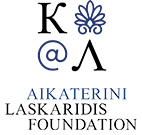Bosporus (220 Subjects)
View of the port of Üsküdar.
View of Istanbul from Surmeli, district north of Ortaköy. In the background the Galata Tower and the mosque of Sultan Suleiman I.
The artillery barracks, at Tophane. Right behind the Nusretiye Mosque, constructed during the reign of Sultan Mahmud II.
View of the port of Tophane. On the right the Ottoman imperial armory. On the left the Mosque of Kılıç Ali Paşa.
The Muslim cemetery of Pera (Beyoğlu). The cemetery started off today's Taxim square, and eventually reached the Bosporus through the neighborhoods of Gümüşsuyu and Fındıklı.
The Ottoman customs house at Karaköy. On the left the Galata Tower.
The Mihrişah Valide Sultan Fountain (or Küçüksu fountain) in the Sweet Waters of Asia, in Istanbul. On the left, the Anatolian Castle.
View of the Seraglio Point. On the left Kadiköy. On the right Hagia Sophia and the Mosque of Sultan Ahmet I.
View of the Seraglio Point from the Sea of Marmara.
View of Istanbul.
Map of Istanbul.
Map of Istanbul and its surroundings.
Feast at Tarabya, on the northwestern coast of the Bosporus.
Map of Istanbul and surrounding area.
The Tower of Leander in Istanbul.
The convergence of Bosporus and the Black Sea seen from Tarabya on the European coast of the Bosporus. Also shown is the position of Anadolu Kavağı (1) and its quay (4), Yoros Castel or Genoese Castle (2) and the structures added to the castle by the Ottomans (3), the Castle of Sultan Murad IV (5) and finally the European coast of the Bosporus.
View of the Bosporus and the settlement of Büyükdere.
View of Seraglio Point, Istanbul, from the French consulate.
View of the spot where the Bosporus joins the Golden Horn.
Volcanic minerals discovered in Istanbul, around the area of the mythic Symplegades or Clashing Rocks: 1) The western side of Yum Burnu promontory, on the norheastern shore of the Bosporus, at the junction with the Black Sea. 2. Agglomerate of volcanic minerals with porphyry veins from Kadiköy (anc. Chalcedon), discovered by the author at Buyuk Liman, on the norheastern shore of the Bosporus. 3) Porphyry from Kadiköy (anc. Chalcedon). 4) Basalt from Buyuk Liman, norheastern shore of the Bosporus. 5) The eastern side of the northeastern end of the Bosporus, at the junction with the Black Sea.
Map of the Bosporus and its surroundings.
The fortresses of Europe and Asia on the Bosporus. In the foreground, the fountain of Küçüksu or fountain of Mihrisah Sultan, near the location of Sweet Waters of Asia (today Göksu Deresi).
Cave of volcanic minerals near Anadolu Kavaği, where the Bosporus joins the Black Sea.
A small boat (kaik) carries Ottoman women to the European shore of the Bosporus. In the background, the tower of Leander.
Passenger boat connecting the eastern and western coasts of the Bosporus. In the background, Rumeli Castle.
The palace of Dolmabahçe and the imperial boat.
View of Bebek, Istanbul.
View of Istanbul from Scutari (Üsküdar). On the left, Hagia Sophia and Topkapi Palace.
Affluent women of Istanbul. Panoramic view of Istanbul. Women of the imperial harem.
Map of Istanbul.































